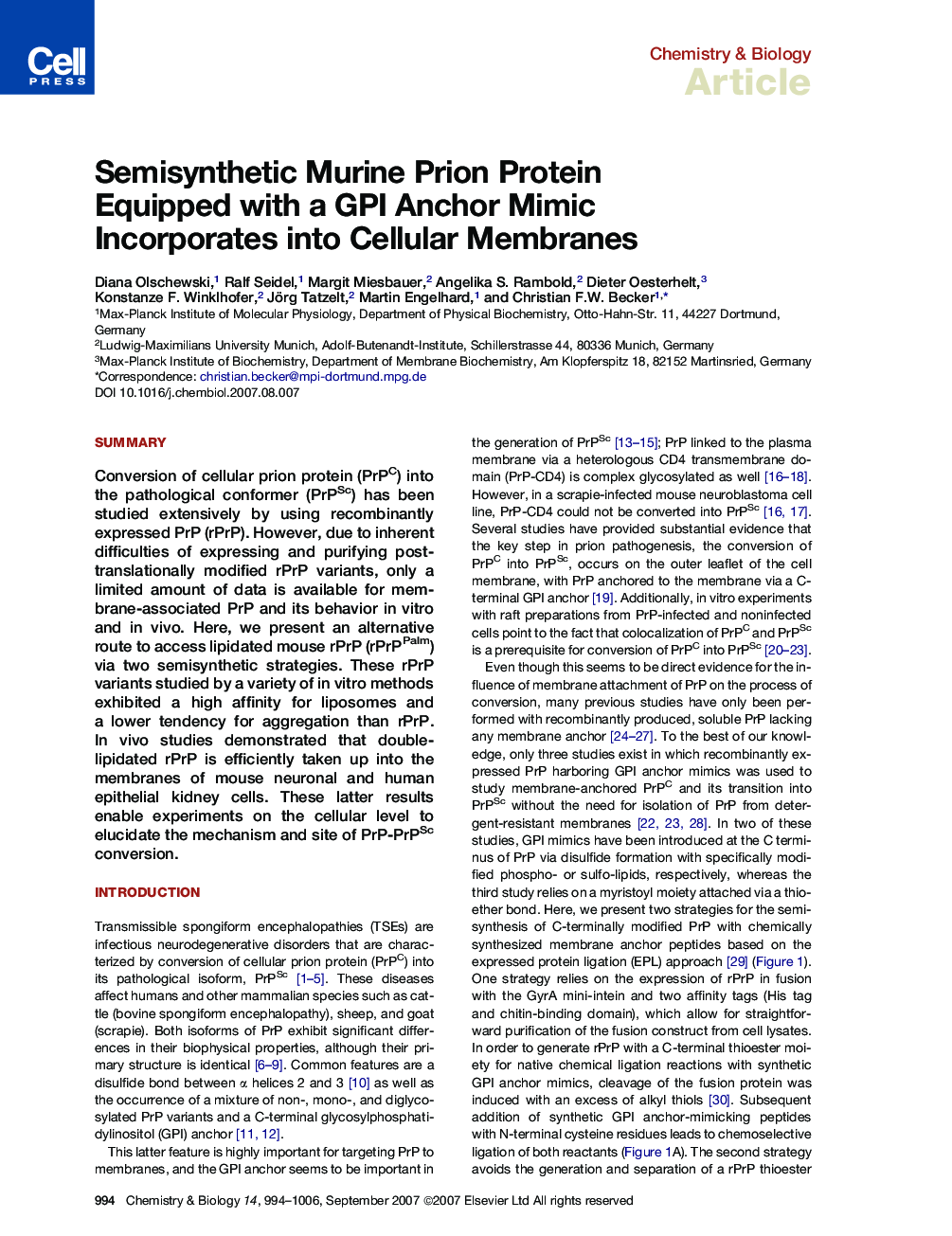| Article ID | Journal | Published Year | Pages | File Type |
|---|---|---|---|---|
| 1391700 | Chemistry & Biology | 2007 | 13 Pages |
SummaryConversion of cellular prion protein (PrPC) into the pathological conformer (PrPSc) has been studied extensively by using recombinantly expressed PrP (rPrP). However, due to inherent difficulties of expressing and purifying posttranslationally modified rPrP variants, only a limited amount of data is available for membrane-associated PrP and its behavior in vitro and in vivo. Here, we present an alternative route to access lipidated mouse rPrP (rPrPPalm) via two semisynthetic strategies. These rPrP variants studied by a variety of in vitro methods exhibited a high affinity for liposomes and a lower tendency for aggregation than rPrP. In vivo studies demonstrated that double-lipidated rPrP is efficiently taken up into the membranes of mouse neuronal and human epithelial kidney cells. These latter results enable experiments on the cellular level to elucidate the mechanism and site of PrP-PrPSc conversion.
